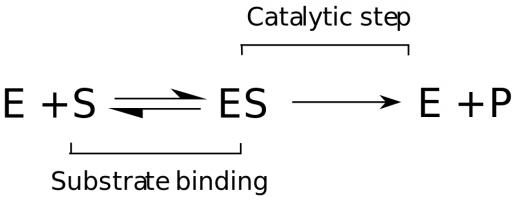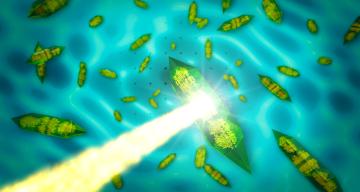Structural Enzymology
Understanding biological reactions
Enzymes are a class of proteins, present throughout the body, which actively increase the speed of chemical reactions. Enzymes bind a substrate to its active site and then convert it to a product. Once the product leaves the binding pocket, the enzyme is ready to attach to a new substrate and continue the process, sometimes called the catalytic cycle. The speed of the catalytic cycle can depend heavily on many factors including temperature and pH.

Observing the catalytic cycle of an enzyme has been the goal of structural biologists since the first enzyme structure was solved. Since many biological functions depend on enzymes, understanding their kinetics and dynamics has never been more important. Unfortunately, it has always been difficult to study an enzyme going through the catalytic cycle.
Current issues to overcome
Time-resolved crystallography is the preferred technique for the structural study of protein kinetics. For this technique, the reaction is commonly triggered with light. Unfortunately, only a small subset of proteins is photosensitive. Some of the most interesting proteins perform enzymatic reactions, which are difficult to study, because they do not get triggered by light and do not “reset” in preparation for the next X-ray pulse.
Not only do these enzymatic reactions not “reset”, but it has been near impossible to capture a single state in a structural study at the synchrotron. The need for relatively large crystals has made it difficult to initiate the reaction simultaneously through the whole crystal. To effectively study enzymatic reactions, an approach is necessary that allows an enzyme to “reset”, as well as a diffusion time that is significantly faster than the enzymatic turnover time. This is where the XFEL becomes vital.
How LCLS can help
XFELs can be used to obtain diffraction patterns from crystals that are only a few hundred nanometers across, at room temperature, while outrunning most of the radiation damage. According to calculations, diffusion times in crystals 1 to 10 µm in size are significantly faster than enzymatic reaction times.
Mix-and-inject serial crystallography (MISC) is a technique that takes advantage of everything an XFEL has to offer. By mixing micron-sized crystals with a substrate in a liquid stream just before injection into the X-ray beam, it is possible to obtain diffraction data from specific structural intermediates along a catalytic reaction (for more on this process, see the section in Sample Delivery techniques). MISC can provide data on substrate binding, structural intermediates, point products, and the release of said products. In the meanwhile, the enzyme kinetics remain biologically relevant because the data is collected at room temperature.
Latest publications
The following publications highlight how LCLS has made an impact in the structural enzymology field in the past few years:
- Rabe et al. (2021) X-ray free-electron laser studies reveal correlated motion during isopenicillin N synthase catalysis. Sci Adv 7: eabh0250.
- Ramakrishnan et al. (2021) Synchronous RNA conformational changes trigger ordered phase transitions in crystals. Nat Comm 12: 1762.
- Miller et al. (2020) The photoactive excited State of the B12-based photoreceptor CarH. J Phys Chem B 124: 10732-10738.
- Artz et al. (2020) Tuning catalytic bias of hydrogen gas producing hydrogenases. J Am Chem Soc 142: 1227-1235.
- Dasgupta et al. (2019) Mix-and-inject XFEL crystallography reveals gated conformational dynamics during enzyme catalysis. Proc Natl Acad Sci USA 116: 25634-25640.
- Ishigami et al. (2019) Snapshot of an oxygen intermediate in the catalytic reaction of cytochrome c oxidase. Proc Natl Acad Sci USA 116: 3572-3577.

